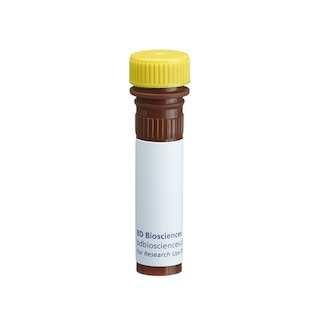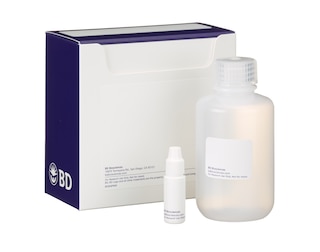-
Reagents
- Flow Cytometry Reagents
-
Western Blotting and Molecular Reagents
- Immunoassay Reagents
-
Single-Cell Multiomics Reagents
- BD® OMICS-Guard Sample Preservation Buffer
- BD® AbSeq Assay
- BD® OMICS-One Immune Profiler Protein Panel
- BD® Single-Cell Multiplexing Kit
- BD Rhapsody™ ATAC-Seq Assays
- BD Rhapsody™ Whole Transcriptome Analysis (WTA) Amplification Kit
- BD Rhapsody™ TCR/BCR Next Multiomic Assays
- BD Rhapsody™ Targeted mRNA Kits
- BD Rhapsody™ Accessory Kits
-
Functional Assays
-
Microscopy and Imaging Reagents
-
Cell Preparation and Separation Reagents
-
- BD® OMICS-Guard Sample Preservation Buffer
- BD® AbSeq Assay
- BD® OMICS-One Immune Profiler Protein Panel
- BD® Single-Cell Multiplexing Kit
- BD Rhapsody™ ATAC-Seq Assays
- BD Rhapsody™ Whole Transcriptome Analysis (WTA) Amplification Kit
- BD Rhapsody™ TCR/BCR Next Multiomic Assays
- BD Rhapsody™ Targeted mRNA Kits
- BD Rhapsody™ Accessory Kits
- United States (English)
-
Change country/language
Old Browser
This page has been recently translated and is available in French now.
Looks like you're visiting us from {countryName}.
Would you like to stay on the current country site or be switched to your country?
BD™ ELISPOT Human IFN-γ ELISPOT Pair
(RUO)

Human IFN-γ ELISPOT Pair
Regulatory Status Legend
Any use of products other than the permitted use without the express written authorization of Becton, Dickinson and Company is strictly prohibited.
Description
The enzyme-linked immunospot (ELISPOT) assay is a powerful tool for detecting and enumerating individual cells that secrete a particular protein in vitro. Based on the sandwich ELISA, the ELISPOT assay derives its specificity and sensitivity by employing high affinity capture and detection antibodies and enzyme-amplification. Although originally developed for analyzing specific antibody-secreting cells, the assay has been adapted for measuring the frequencies of cells that produce and secrete other effector molecules, such as cytokines. The sensitivity of the assay lends itself to measurement of even very low frequencies of cytokine producing cells (e.g., 1/300,000). Unique strengths of the assay include high sensitivity, high throughput, high content analysis, minimal volume of biological material required, applicability to frozen/thawed biological samples, and compatibility with other assays. For example, cells analyzed by ELISPOT can be transferred for cloning, proliferation assays, flow cytometry, or other methods of analysis.
This product contains sufficient reagents for five 96-well plates, including unlabelled anti-cytokine capture antibody (no azide/low endotoxin format); biotinylated anti-cytokine detection antibody and a Certificate of Analysis that provides lot-specific optimal reagent concentrations.
Preparation And Storage
Recommended Assay Procedures
ADDITIONAL REAGENTS REQUIRED
A. BD™ ELISPOT Streptavidin Horseradish Peroxidase (Cat. No. 557630) is recommended.
B. Coating Buffer (1X Phosphate Buffered Saline [PBS]): 8 g NaCl; 0.2 g KCl; 1.44 g Na2HPO4·7H2O, 0.24 g KH2PO4; dissolved in H2O to a final volume of 1 liter. Adjust pH to 7.2, sterile-filter (0.2 µm-sized pore filter) and store at 4ºC.
C. Blocking Solution: complete tissue culture medium (e.g. RPMI 1640 containing 10% Fetal Bovine Serum [FBS] and 1% Penicillin-Streptomycin-L-Glutamine [Gibco-BRL No. 10378-016]).
D. Wash Buffer I: 1X PBS containing 0.05% Tween-20 (0.5 mL Tween-20 per 1 L PBS).
E. Wash Buffer II: 1X PBS
F. Dilution Buffer: 1X PBS containing 10% FBS.
G. BD™ ELISPOT AEC Substrate Set (Cat. No. 551951) is recommended. Alternatively, Prepare as follows:
1. Prepare AEC (3-Amino-9-ethyl-carbazole; Sigma A-5754) stock solution: mix 100 mg AEC in 10 mL DMF
(N,NDimethylformamide; Sigma D-4551). Caution: dispense DMF in fume hood. Store solution in glassware.
2. Prepare 0.1 M Acetate Solution: add 148 mL of 0.2 M acetic acid/glacial acidic acid to 352 mL of 0.2 M sodium
acetate. Adjust volume to 1 L DI water; adjust pH to 5.0.
3. For Final Substrate Solution, add 333.3 µL of AEC stock solution to 10 mL 0.1 M Acetate Solution. Filter through
0.45 µm filter. Add 5 µL of H202 (30%) and use immediately.
ELISPOT PROTOCOL
NOTE: Use ELISPOT plates and reagents under aseptic conditions (e.g., using a laminar flow hood or biosafety cabinet) for Steps 1-7. Solutions noted with an asterisk (*) are not included and are described in the Additional Reagents Required section.
Coating Antibody
1. Dilute capture antibody in Coating Buffer* (see Certificate of Analysis for antibody dilution information). Add 100 µl of diluted antibody solution to each well of an ELISPOT plate; Millipore plate, Cat. No. S2EM004M99 is recommended.
2. Store plates at 4ºC overnight.
Blocking
3. Discard Coating Antibody. Wash wells 1X with 200 µL/well Blocking Solution*.
4. Add 200 µL/well Blocking Solution and incubate for 2 hr at room temperature.
Cell Activation
5. Discard Blocking Solution. Prepare mitogen or antigen, diluted in complete tissue culture medium (e.g., RPMI 1640 with FBS, Pen/Strep, and L-glutamine). Add 100 µL/well to ELISPOT plate.
6. Prepare cell suspensions at different densities, (e.g., 1 X 10e5/mL - 2 X 10e6 cells/mL) Add 100 µL/well of each cell suspension to ELISPOT plate wells.
7. Replace ELISPOT plate lid. Incubate ELISPOT plate at 37ºC, 5% CO2 and 99% humidity. The duration of the incubation time can be varied (e.g., 2 hr - 24 hr) depending on the nature of the stimulatory cell culture system.
Specific activation conditions and incubation times will vary, depending on cell type, kinetics, and cytokine of interest. Please see Certificate of Analysis provided with each ELISPOT Pair for assay conditions of suggested positive controls.
Note: After step 7, aseptic conditions are no longer needed.
Detection Antibody
8. Aspirate cell suspension. Wash wells 2X with deionized (DI) water. Allow wells to soak for 3-5 min at each wash step.
9. Wash wells 3X with 200 µL/well Wash Buffer I*. Discard Wash Buffer.
10. Dilute Detection Antibody in Dilution Buffer* (see Certificate of Analysis for antibody dilution information). Add 100 µL per well.
11. Replace lid and incubate for 2 hr at room temperature.
Enzyme
12. Discard Detection Antibody solution. Wash wells 3X with 200 µL/well Wash Buffer I*.
13. Dilute Streptavidin-Horseradish Peroxidase (HRP)* in Dilution Buffer. (BD™ ELISPOT Streptavidin-HRP, Cat. No. 557630 is recommended). Add 100 µL/well diluted Streptavidin-HRP.
14. Replace lid; incubate for 1 hr at room temperature.
Substrate
15. Discard Streptavidin-HRP solution. Wash wells 4X with 200 µL/well Wash Buffer I*.
16. Wash wells 2X with 200 µL/well Wash Buffer II*.
17. Add 100 µL of Final Substrate Solution (AEC)* to each well. Monitor spot development from 5 - 60 min.
18. Stop substrate reaction by washing wells with DI water.
19. Air-dry plate for 2 hr - overnight at room temperature in the dark, until the plate is completely dry. Store plate in the dark, prior to analysis.
20. Enumerate spots manually using a dissecting microscope or automatically using an ELISPOT Analyzer.
Product Notices
- Please refer to www.bdbiosciences.com/us/s/resources for technical protocols.
- Caution: Sodium azide yields highly toxic hydrazoic acid under acidic conditions. Dilute azide compounds in running water before discarding to avoid accumulation of potentially explosive deposits in plumbing.
Companion Products


| Description | Quantity/Size | Part Number | EntrezGene ID |
|---|---|---|---|
| Human IFN-γ ELISPOT Capture Antibody | N/A | 51-2555KZ | N/A |
| Human IFN-γ ELISPOT Detection Antibody | N/A | 51-1890KZ | N/A |
Development References (5)
-
Czerkinsky C, Andersson G, Ekre HP, Nilsson LA, Klareskog L, Ouchterlony O. Reverse ELISPOT assay for clonal analysis of cytokine production. I. Enumeration of gamma-interferon-secreting cells. J Immunol Methods. 1988; 110(1):29-36. (Methodology). View Reference
-
Fujihashi K, McGhee JR, Beagley KW, et al. Cytokine-specific ELISPOT assay. Single cell analysis of IL-2, IL-4 and IL-6 producing cells. J Immunol Methods. 1993; 160(2):181-189. (Methodology). View Reference
-
Helms T, Boehm BO, Asaad RJ, Trezza RP, Lehmann PV, Tary-Lehmann M. Direct visualization of cytokine-producing recall antigen-specific CD4 memory T cells in healthy individuals and HIV patients. J Immunol. 2000; 164(7):3723-3732. (Methodology). View Reference
-
Ronnblom L, Cederblad B, Sandberg K, Alm GV. Determination of herpes simplex virus-induced alpha interferon-secreting human blood leucocytes by a filter immuno-plaque assay. Scand J Immunol. 1988; 27(2):165-170. (Methodology). View Reference
-
Sedgwick JD, Holt PG. A solid-phase immunoenzymatic technique for the enumeration of specific antibody-secreting cells. J Immunol Methods. 1983; 57(1-3):301-309. (Methodology). View Reference
Please refer to Support Documents for Quality Certificates
Global - Refer to manufacturer's instructions for use and related User Manuals and Technical data sheets before using this products as described
Comparisons, where applicable, are made against older BD Technology, manual methods or are general performance claims. Comparisons are not made against non-BD technologies, unless otherwise noted.
For Research Use Only. Not for use in diagnostic or therapeutic procedures.